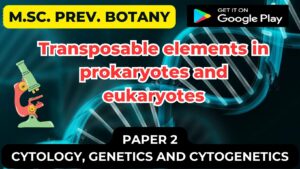![]()
Retinoblastoma and E2F Protein
- Retinoblastoma is a human childhood disease, involving a tumor of the retina.
- It occurs both as a heritable trait and sporadically (by somatic mutation).
- It is often associated with deletions of band q 14 of human chromosome 13.
- The RB gene has been localized to this region by molecular cloning.
Summarizes the situation.
- Retinoblastoma arises when both copies of the RB gene are in-parental chromosome carries an alteration in this region.
- A somatic event in retinal cells that causes loss of the other copy of the RB gene causes a tumor.
- In the sporadic form of the disease, the parental chromosomes are normal, and both RB alleles are lost by (individual) somatic events.
- The cause of retinoblastoma is therefore loss of protein function.
- Loss of RB is involved also in other forms of cancer, including osteosarcomas and small cell lung cancers.
- RB is a nuclear phosphoprotein that influences the cell cycle.
- In resting (G0/G1) cells, RB is not phosphorylated.
- RB is phoshorylated during the cell cycle by cyclin/cdk complexes, most particularly at the end of G1; it is dephosphorylated during mitosis.
- The non-phosphorylated form of RB specifically binds several protein, and these interactions therefore occur only during part of the cell cycle (prior to S phase).
- Phosphorylation releases these protein.
- The target proteins include the E2F group of transcription factors, which activate target genes whose products are essential for S phase.
- Binding to RB inhibits the ability of E2F to activate transcription,
- Which suggests that RB may repress the expression of genes dependent on E2F.
- In this way, RB indirectly prevents cells from entering S phase.
- Also, the RB-E2F complex directly represses some target genes, so its dissociation allows them to be expressed.
- Certain viral tumor antigens bind specifically to the non-phosphorylated from of RB.
- The best characterized are SV40 T antigen and adenovirus E1A.
- This suggests the model shown in Non-phosphorylated RB prevents cell proliferation , this activity must be suppressed in order to pass through the cell cycle, which is accomplished by the cyclic-phosphorylation.
- And it may also be suppressed when a tumor antigen sequesters the non-phosphorylated bind E2F, the E2F is permanently free to allow entry into S phase (and the RB-E2F complex is not available to repress its target genes.)
Over-expression of RB impedes cell growth.
- An indication of the importance of RB for cell proliferation is given by the properties of an osteosarcoma cell line that lacks RB;
- when RB is introduced into this cell line, its growth is impeded.
- However, the inhibition can be overcome by expression of D cyclins, which form cdk-cyclin combinations that phosphorylate RB. RB is not the only proteins of its type : proteins with related sequences, called p107 and p130, have similar properties.
- The connection between the cell cycle and tumor genesis is illustrated in several regulators are identified as tumor suppressors by the occurrence of inactivating mutations in tumors.
- In addition to RB itself, there are the small inhibitory proteins (most notably p16 and possibly p21), and D cyclin.
- Although these proteins (most notable RB) play a role in the cycle of a proliferating cell, the role that is relevant for tumor-genesis is more probably their function in the quiescent (G0) state.
- In quiescent cells, RB is not phosphorylated,
- D cyclin levels are low or absent, and p16, p21 p27 ensure inactivity of cdk-cyclin complexes,
- The loss of this circuit is necessary for unrestrained growth.



